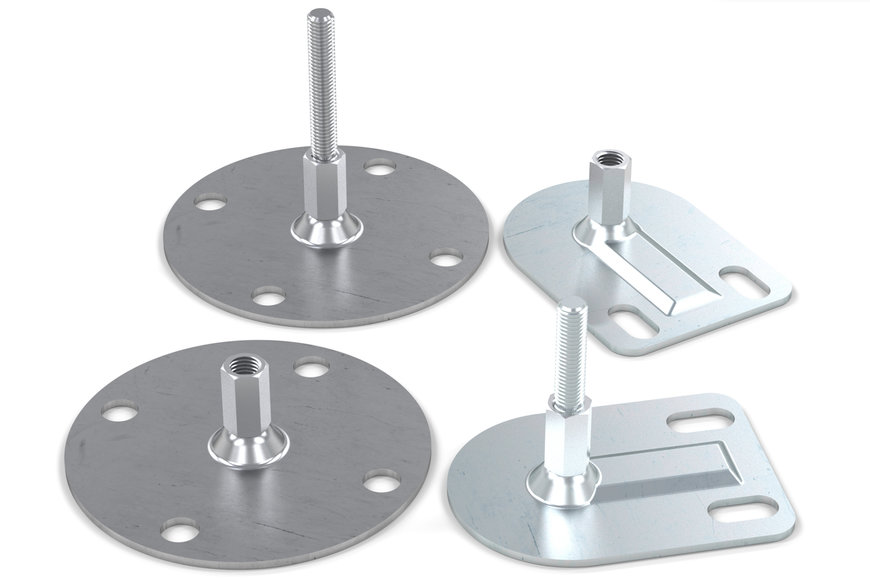www.magazine-industry-usa.com
23
'24
Written on Modified on
Low-profile levelling feet provide stability for medium-duty applications
A new range of pressed stainless steel levelling feet from WDS Components is providing a lightweight, low-profile alternative to the component supplier’s existing, heavy-duty range.

Duck feet and circular designs are available, providing durability at a competitive price point for medium-duty applications. Offering stability and controlled adjustment for a range of host machinery and equipment, the new levelling feet are designed and manufactured in-house at WDS’ Leeds facility.
Stabilising equipment on uneven surfaces, WDS’s levelling feet enable tilt adjustment and can be used across applications including conveyor systems, OEM machinery, manufacturing and industrial equipment. They can be installed by OEMs to simplify installation, retrofitted to legacy equipment, and used in conjunction with aluminium profiles.
The levelling feet are pressed from sheet stainless steel or mild steel, achieving a durable construction. The new light-weight designs offer a lower price point compared to WDS’ existing range of machined or cast, heavy-duty, steel or stainless steel levelling feet, and are ideal for light- to medium-duty applications. Stainless steel construction means the new levelling feet are corrosion-free and can be used in environments where moisture or chemicals are present. The polished steel designs also offer a high quality aesthetic appearance. The steel variants are available with a zinc plated finish.
Both new levelling feet designs, presented on wds components under part number WDS 772, comprise a pressed steel base with bolt-down holes, a coupling nut and a screw with an O-ring assembly. The coupling nut is threaded onto the base, and the screw adjusts the height, enabling five degrees of tilt adjustment. When the desired position is reached, it can be locked in position when the hex nut is tightened. The rubber seal O-ring sits below the assembly, giving smooth articulation and enhancing adjustment control.
The duck feet design, so called because of its flat and semi-circular adjacent ends, provides stability while enabling the supporting side to be angled out of the way. The protruding side can be pointed inwards and positioned underneath the item it’s supporting. Alternatively, the design allows its host to have a lower profile, with the protruding side pointing outwards. The duck feet design can be secured via two screw/bolt holes. Alternatively, the circular design has a diameter of 125mm. With this wider base, stability can be optimised by bolting the foot to the floor via four holes.
Both designs are available in male thread variants with a connecting stem, as well as female thread variants. Just 3mm thick, the designs have an extremely low profile across the base, increasing to a maximum thread height of 45mm. Meanwhile, male stem lengths range from 20mm to 100mm. Available thread sizes across both the duck feet and circular designs, in male and female threads, include M8, M10, M12, and M16.
Full specifications of the new levelling feet are available online, including free to download CAD drawings in nine formats, as well as non-specialist image file formats. The website also presents WDS’ wider range of levelling feet designs, which include plastic bases, as well as 316 stainless steel construction.
www.wdscomponents.com

